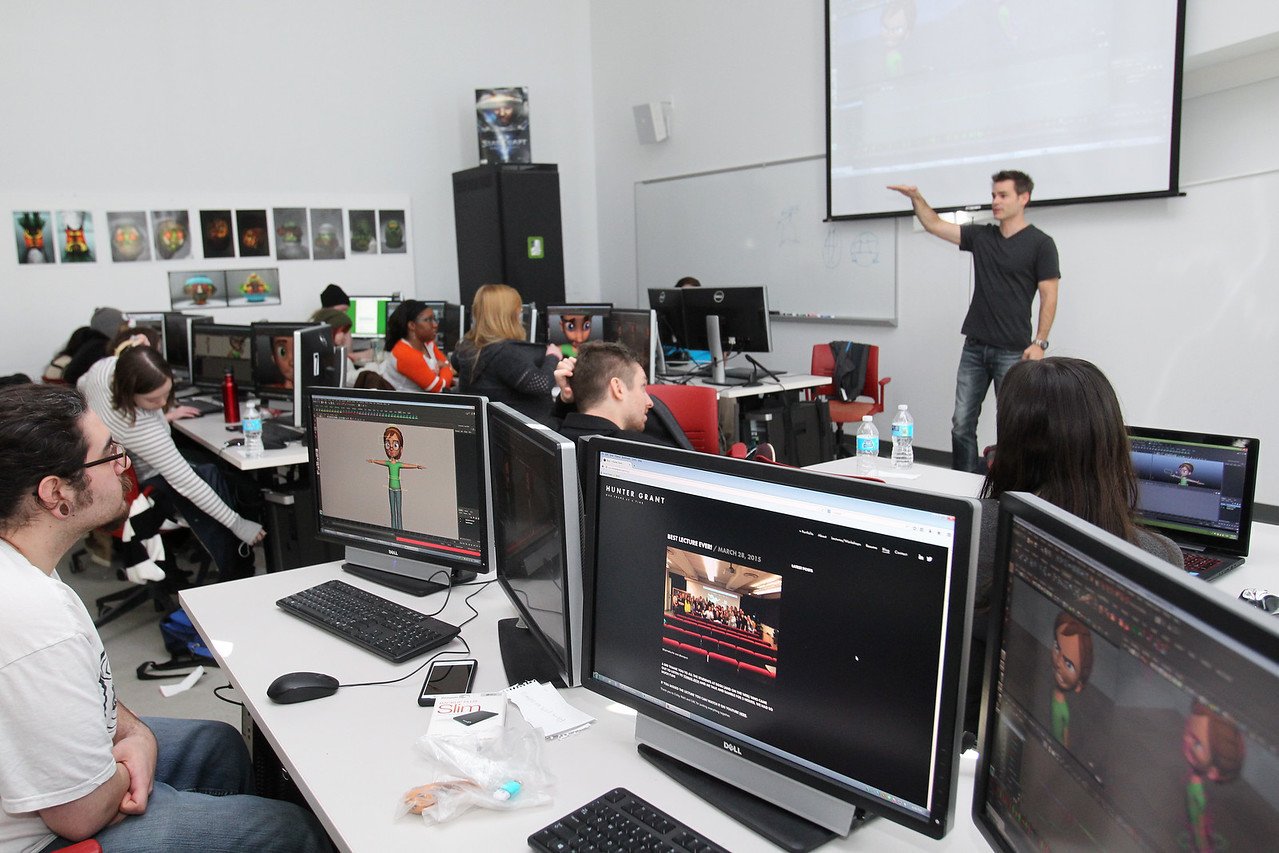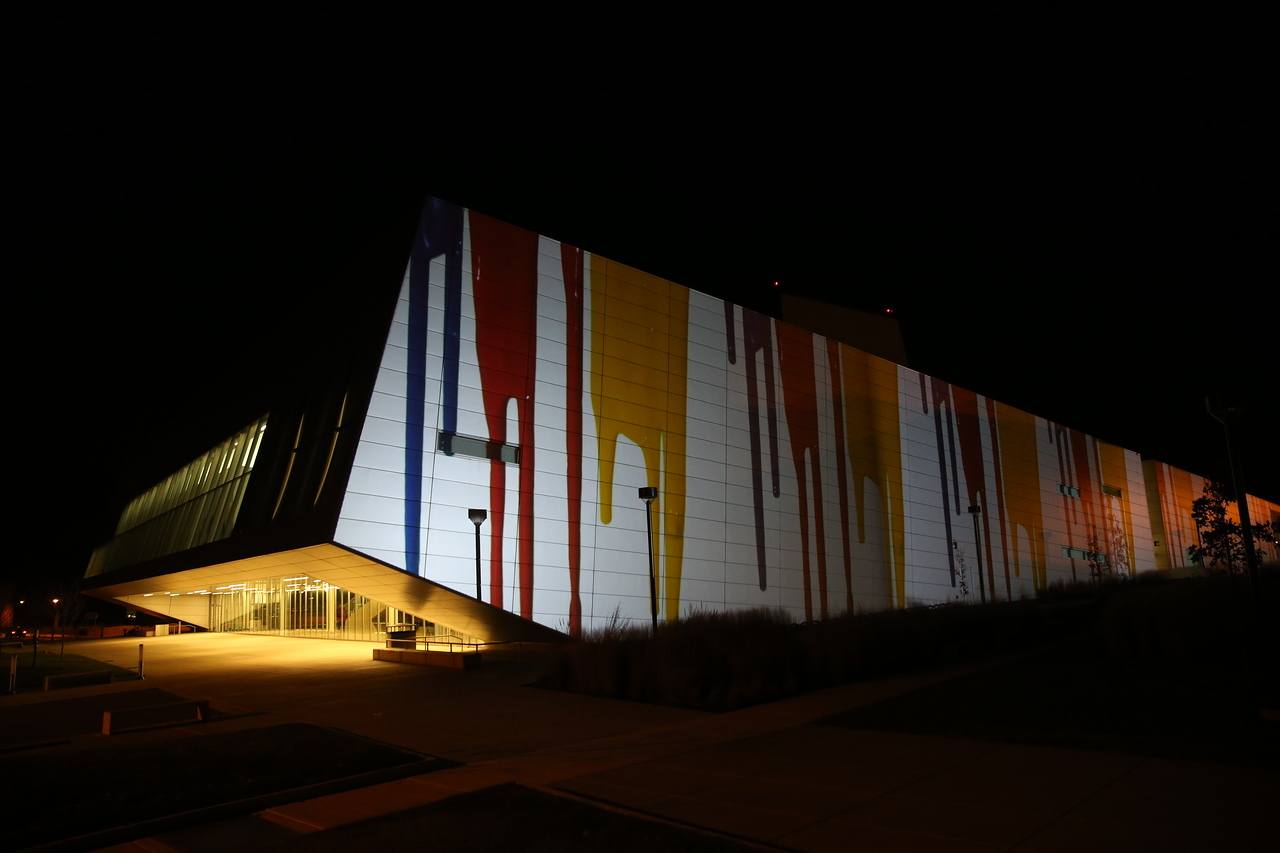Nationally recognized for student experience
The Wall Street Journal

Master of Fine Arts (MFA)
Art: Digital Arts
A Master of Fine Arts (MFA) in art with a specialization in digital arts is your ticket to a top-tier career in creative technology. Graduates of the Bowling Green State University digital arts master’s degree program are equipped with the advanced artistic and technological skills to excel in dynamic professions that blend art with innovation.
Take your talent to the next level with a degree that allows you to:
- Lead digital projects at design firms, advertising agencies and media companies.
- Design user-friendly digital experiences for websites, apps or interactive platforms.
- Work in film, television, gaming or marketing to bring visuals to life through animation and motion design.
- Develop interactive media and digital installations for museums, schools, nonprofits, businesses and more.
- Teach the next generation of digital artists at the college level.
- Redefine what’s possible by creating new applications for digital arts.
BGSU is accredited by the National Association of Schools of Art & Design (NASAD) and recognized as one of the best digital art colleges in the Midwest. With a master’s degree in digital arts from BGSU, you’re ready to become a leader in the art world, classroom, tech industry and beyond.
Program highlights
- Artistic mastery. Build advanced technical and conceptual skills in areas like 3D modeling, animation, virtual reality (VR), augmented reality (AR) and digital storytelling.
- Mentorship. Learn from faculty with abundant real-world experience and international recognition in the field of digital arts.
- Cutting-edge tech. Work with state-of-the-art tools and software that mirror what industry leaders are using today.
- Networking and collaboration. Connect with creative peers and professionals, forming relationships that will bolster your career.
- Gain creative confidence. Build the self-assurance to lead projects, influence creative teams and set trends in the art and technology industries.
- Showcase your talents. All digital arts master’s degree students complete a body of work and accompanying brochure to be entered into the BGSU MFA Exhibition, held each spring in the Fine Arts Center.
- Study abroad. Earn college credit while studying abroad at one of the BGSU partner schools in Florence, Italy: the International Studies Institute or the Santa Reparata International School of Art.
- Medici Circle sponsorships. Transcend traditional classroom experiences with Medici Circle sponsorships. This fund covers costs for student field trips to art exhibitions in major cities, student travel for presentations, conferences and workshops, and acquisition of student work for the Fine Arts Center Galleries.
- Incredible connections. BGSU is known as one of the best colleges for digital art. Our alumni work for companies such as DreamWorks Animation, Blue Sky Studios, Volition, DNA Productions, Rhythm & Hues Studio, Blizzard, American Greetings, Apple, Root Learning, LogicJunction and more!
BGSU is ranked in the top animation school programs in Ohio by Animation Career Review.
#1 public university in Ohio for career prep
The Wall Street Journal
Career opportunities
With a digital arts MFA from BGSU, you’ll acquire the kind of advanced knowledge, practical experience and critical thinking skills that will make you an attractive job candidate in many competitive industries. You can also tailor your studies to focus more intensely on a single area.
Our graduates have gone on to create immersive gaming environments, produce cinematic visual effects for blockbuster films and design captivating content for websites.
Beyond industry-specific roles, some graduates gravitate toward opportunities in education and research, teaching at colleges and universities.
Others pursue positions in digital archiving and museum curation, bridging the gap between traditional art and new technologies. A number have become entrepreneurs, launching their own studios, producing independent projects or consulting on creative tech solutions.
Each of these professional paths holds the promise of long-term growth opportunities and competitive salaries.
Career paths
- Digital artist
- Multimedia designer
- 3D modeler and animator
- User experience (UX) and user interface (UI) designer
- Game designer
- VR/AR designer
- Digital archivist or preservationist
- Concept artist
- Digital marketing specialist
- Creative director or art director
- Motion graphics designer
- Digital media teacher or professor
Quick Facts from the Bureau of Labor Statistics
Our ACM SIGGRAPH student chapter has been named one of the top 3 most active in the world.
Curriculum
The BGSU MFA in art with specialization in digital arts program is designed for aspiring artists seeking advanced technical skills, innovative conceptual exploration and leadership preparation.
The digital arts master’s degree requires completion of 60 credit hours (at least 18 of those at the 6000 level or higher) within 6 years.
- Core courses in digital arts (animation, interactive media, digital imaging, etc.)
- Classes in art history and electives (advanced study in disciplines such as drawing, sculpture, painting, glassworks, etc.)
- A culminating experience that involves an exhibition and exhibition research
Each student is assigned a major professor to oversee matriculation and serve as chair for their graduate review committee. All will be on probationary status for the first 15 credit hours, after which they must pass department review for permission to continue.

Sample courses
- Pedagogy and Research in Studio Art
- Artistic Animation Effects
- Digital Video Art
- Digital Animation Studio
- Advanced Study in Digital Imaging Art
- Collaborative Multimedia Development
#1 university in Ohio – big or small, public or private – students would choose again
The Wall Street Journal
The Master of Fine Arts in art with specialization in digital arts is part of the School of Art in the BGSU College of Arts and Sciences.
Accreditation
BGSU is accredited by the National Association of Schools of Art and Design (NASAD).
Bowling Green State University [BGSU] is accredited by the Higher Learning Commission. BGSU has been accredited by the Higher Learning Commission since 01/01/1916. The most recent reaffirmation of accreditation was received in 2022-2023, with our next reaffirmation of accreditation scheduled for 2032-2033. Questions should be directed to the Office of Institutional Effectiveness.
Request Information
Updated: 11/25/2025 01:55PM

